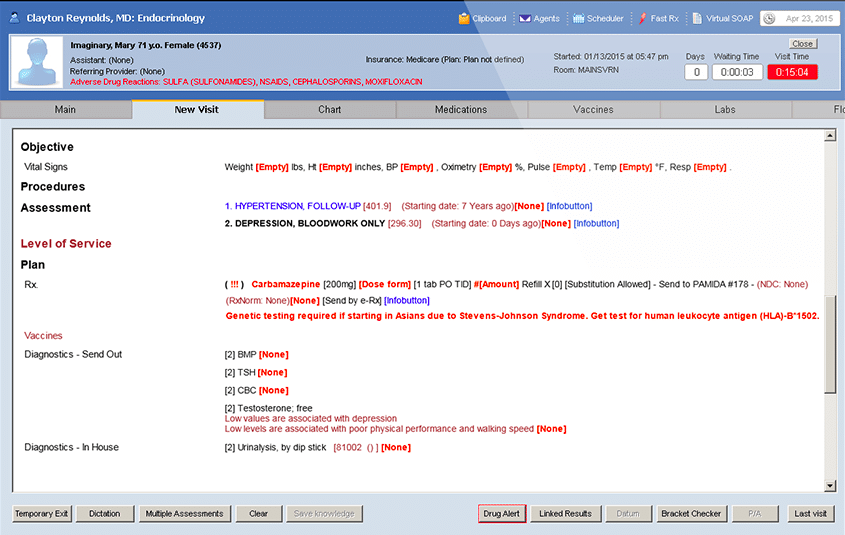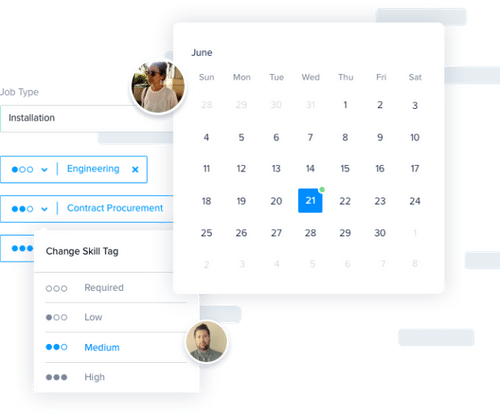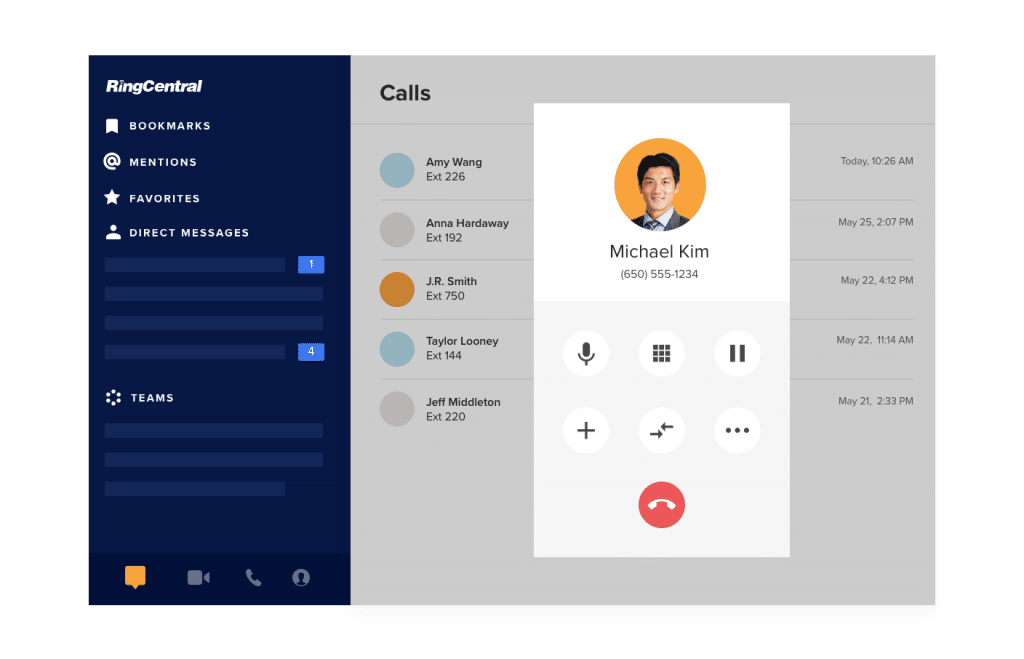Healthcare is a broad term.
And when we say broad, we mean it encompasses different professions, settings, and practices. Doctors, nurses, dentists, physiotherapists, chiropractors, pharmacists, midwives, and many others are all healthcare practitioners—and within those professions, there are endless specialities.
One of the key components of providing effective, efficient, and safe healthcare is making sure your healthcare practice works well together as a team.
In this post, we’ll look at:
- What effective communication in healthcare looks like
- Why communicating well in healthcare is important
- 3 types of tools that are essential to working well together in a healthcare practice
What does effective communication in healthcare look like?
Communicating well in healthcare requires a certain degree of collaboration between everyone—from nurses to administrative staff to practitioners—all to make sure that patients and clients are getting the best care possible. (And if you’re running a remote-friendly healthcare practice, this is especially important.)
It’s essential not only for members of the same profession—for example doctors working well with other doctors to provide the best possible care for a patient—but also for professionals working across various disciplines.
Why is effective communication in healthcare important?
Healthcare relies on multidisciplinary teamwork. After all, humans are complex and have many needs. Not all of these needs can be met by a single healthcare provider, or even a single profession.
Let’s look at an example:
A patient comes into a family practice clinic for his yearly check up and physical. The family doctor assesses the patient and sends him to a lab to get bloodwork done.
The lab technician reads the doctor’s requisition and draws the blood needed for the various tests the doctor wants performed. The blood is analyzed and the results are sent back to the doctor. The patient’s blood sugars are high, so more tests are done.
The doctor eventually diagnoses this patient with Type II diabetes and refers the patient to an endocrinologist and a dietitian.
The endocrinologist reads the referral from the family doctor and discusses options for treatment while the dietitian works with the patient to develop a meal plan to control the diabetes.
The patient receives a prescription for insulin and goes to the pharmacy. The pharmacist reads the prescription, gives the patient the medication, and explains how to use it.
At the patient’s next appointment, his blood sugars are responding well to the treatment. While he still has to follow his meal plan and take insulin, the family doctor, endocrinologist, and dietitian are very happy with this news.
And while the lab technicians and the pharmacist might not have had much of an encounter with this patient, they were essential to providing effective care and contributing to this good outcome.
In this scenario, the patient gets everything he needs for his unique situation and is put on a promising path for controlling and living with his diabetes.
A major reason for why this was possible is because of the clear communication and referrals made to the right people. The family doctor doesn’t attempt to treat and educate the patient all on her own; that is far too much to add to her workload.
Instead, the family doctor communicates with the right specialists (the endocrinologist and the dietitian) to address those specific needs.
Healthcare relies on teamwork across different professions and specialities, and there are four main reasons that this teamwork is so important:
- Patients can have very complex needs and need access to healthcare providers with specialized skills. In this example, the patient needed help with medications and diet changes; the endocrinologists and dietitian have the skills necessary to give the patient that help.
If this patient has another condition, such as high blood pressure or a heart condition, he might be referred to another specialist. - Effective teamwork can reduce errors. A family doctor who isn’t familiar with diabetes might prescribe an inappropriate medication, or simply might not have the time or knowledge to have a long, drawn-out discussion specifically about nutrition. It’s better to send the patient to a specialist who has in-depth expertise in this area. Reducing errors like this increases patient safety—which is in everyone’s best interest.
- Working together also helps prevent burnout. Imagine that family doctor trying to manage someone’s diabetes while their waiting room is filled with other cases that need just as much attention and specialization. Because the patient is seeing an endocrinologist and a dietitian too, the family doctor is able to attend to other needs and focus on her role as a generalist.
- Teamwork can also help patients feel better, and not just in terms of their health. The patient in this scenario feels at ease knowing that he has a team of professionals working together to manage his diabetes. He feels cared for and is happy with the care he is receiving. His team is also satisfied with the care they’ve provided.
Unfortunately, communication in healthcare isn’t always smooth and efficient.
Issues like miscommunication, unclear referral pathways, and hierarchies among professionals often contribute to a breakdown in teamwork. There’s a lot of research out there, and many initiatives are being carried out to identify and address these gaps.
But change takes time—especially in such a large and complex system like healthcare.
The good news is that there are tools and software designed to make it easy to work as a team! Of course, technology can’t solve all the problems in the healthcare system, but the right tool might be helpful in your clinical practice.
Software for healthcare typically focuses on communication, charting, and scheduling. Let’s look at examples of each one.
Essential tools that help healthcare teams work together more effectively
1. A communication platform: RingCentral
RingCentral is an innovative cloud-based platform that gives healthcare teams a serious boost in the teamwork department. It lets healthcare providers message, call, or video call each other from any device and any location. All you need is the mobile app:
Teams can collaborate in real time, make plans and decisions faster, and take action where needed. In healthcare, when every second counts, this is crucial.
Coordination can happen much faster this way, especially in situations where certain team members are in different locations. For example, a family physician in a rural, isolated community can coordinate patient care with various specialists in an urban center that’s hundreds of miles away.
With telehealth’s rise in popularity, RingCentral is useful because it facilitates communication between care providers and patients—all you need is the internet and a cell phone.
As a bonus, RingCentral’s communication platform offers other useful features for healthcare too, like appointment scheduling, automatic SMS appointment reminders, and follow-up SMS messages.
Learn about how Dentistry for Kids and Adults uses one simple app to make sure the whole team can stay in sync and provide a great client experience.
2. A charting tool: Praxis
As any healthcare provider will tell you, proper documentation, including charting, is an essential skill for patient care—and is especially important for teamwork.
Electronic medical records (or EMR) has been a game-changer for streamlining communication, ensuring patient information is accurate and complete, and allowing quick access to patient records:

Praxis is a cloud-based EMR that uses AI technology to optimize charting. Lots of EMR software have clunky templates that aren’t relevant for all clinical encounters.
Praxis doesn’t have templates, but it is very flexible, so a healthcare provider can chart exactly what they need to, in the format that works best for them.
What’s really neat here is that over time, its AI technology adapts to the providers’ style and preferences, so charting can be done faster and faster, until it becomes so familiar with their workflow that it’s done in the blink of an eye.
The more you use it, the faster and easier it is—which gives you more time to spend with your patients and collaborate with your colleagues.
3. A scheduling tool: Skedulo
Having a functional scheduling system is essential for a functional clinic or practice. Skedulo is an online appointment scheduling software that is a great choice for ensuring organization, sanity, and communication, while making the lives of both patients and providers easier:

Skedulo’s technology can automatically work with important factors—a providers’ speciality, experiences, the patients’ history—to match the patient with the right provider. Providers’ and patients’ schedules are managed in one location, in one system.
Appointment details and updates are sent directly to providers’ phones. All of these features mean that Skedulo can help with making sure healthcare providers are seeing the right patients at the right time, using their precious time more efficiently, so they can focus on teamwork and patient care.
[ebook-download title=”Learn more about managing your finances as a remote team” src=”” link=”https://www.ringcentral.com/remote-work-finance-playbook.html”]
The key to achieving effective communication in healthcare
Good communication in healthcare definitely isn’t the easiest thing to accomplish, but it is essential for both healthcare providers and their patients.
Communications, charting, and scheduling tools can improve and streamline the day-to-day operations of a clinic or practice and make teamwork much easier.
Many of the software options on the market have multiple features and free trials, so take some time to figure out which service is best for you and your team.
Originally published Mar 01, 2020, updated Jan 14, 2021







